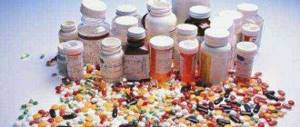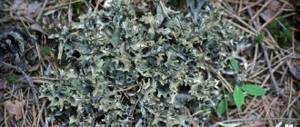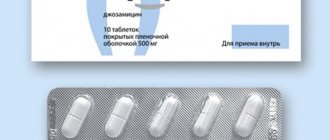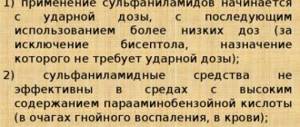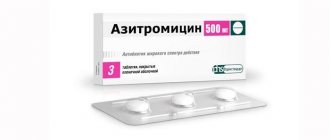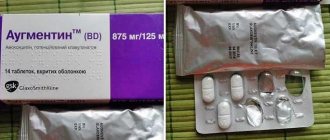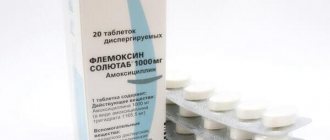I took it for the treatment of sinusitis. Expensive, but effective.
Sinusitis is a completely unfamiliar disease to me.
No, of course I’ve heard about it before, I know about the puncture and the “cuckoo”, but it never concerned me or my family. And suddenly it happened! I take antibiotics extremely rarely; I don’t even remember when I had to take such drugs. But this year, a complication after the flu, in the form of purulent sinusitis, left me no chance to do without taking an antibiotic. The doctor prescribed a set of medications, including the antibiotic Levofloxacin, but the pharmacy sold my husband Tavanik, which costs several times more.
Having seen the package with the name Tavanik, I already thought that my husband had bought something wrong, because such a drug was not on my list of medications that the doctor prescribed. But then, under the trade name Tavanic, I saw Levofloxacin written in smaller print. There is only one active ingredient, only the price of imported Tavanik is 1000 rubles, and Levofloxacin costs about 400 rubles.
I had to take Tavanik for 10 days, one tablet per day at the same time. It was more convenient for me to take the pill in the morning.
The tablets are large, but not gigantic. They are oval in shape, easy to swallow and do not stick in the throat, unlike, for example, imported vitamins, which are always difficult for me to swallow. If desired, the tablet can be divided into two halves; there is a groove for this. It will be even easier to swallow half. I swallowed the tablet whole and washed it down with plenty of water.
You can take the tablets at any time between meals because it makes no difference whether you take the tablet on a full or empty stomach.
I had to try both options, because after a while after taking the pill, I began to experience slight nausea and therefore, I was looking for the most comfortable option. But alas, eating did not affect this moment in any way. In any case, I felt nauseous, but it didn’t last long, about 15-20 minutes. It's quite possible to survive.
The tablets have a pleasant pinkish tint. They look nice, but for what? If you look at the composition, then in addition to the active substance and auxiliary components, you can find a dye, and more than one! For what? I don’t take pills for pleasure and I absolutely don’t care what color they are, the main thing is how they work.
The pain from sinusitis was so severe that I was even prescribed a painkiller (Nimesil). I only took it once. On the second day after starting to take Tavanik and complex treatment, the pain decreased and, although it did not go away, it became tolerable, so I did not take painkillers.
This antibiotic is broad-spectrum and very strong. Just one tablet, and the effect lasts for a day. I needed to take Tavanik for 10 days, but of course, when the symptoms decreased, I no longer wanted to take pills, but in no case should I interrupt the course because untreated diseases risk the bacteria becoming more resistant to the antibiotic or completely stopping react to him.
I took the full 10-day course and the drug effectively coped with the task, and those minor inconveniences in the form of mild nausea that arose briefly after taking the pill were quite tolerable. The drug helped me cope with sinusitis and I certainly recommend it, but always after consulting a doctor.
My other assistants in the treatment of sinusitis:
Glevo with sinusitis
The drug is active against aerobic gram-positive and gram-negative microorganisms, anaerobic microorganisms, as well as other microorganisms: Bartonella spp.
Chlamydia pneumoniae, Chlamydia psittaci, Chlamydia trachomatis, Legionella pneumophila, Legionella spp. Mycobacterium spp. (incl.
Mycobacterium leprae, Mycobacterium tuberculosis), Mycoplasma hominis, Mycoplasma pneumoniae, Rickettsia spp. Ureaplasma urealyticum.
- infections of the lower respiratory tract (including exacerbation of chronic bronchitis, community-acquired pneumonia);
- genital infections;
- infections of the abdominal cavity (in combination with drugs acting on anaerobic microflora).
- diarrhea (including blood);
- pseudomembranous enterocolitis;
- dysbacteriosis;
- decrease in blood pressure;
- vascular collapse;
- headache;
- drowsiness;
- depression;
- disturbances of vision, hearing, smell, taste and tactile sensitivity;
- allergic pneumonitis;
- tendon damage due to previous treatment with quinolones;
- Leobag;
- Packaging of the medicine, its form, description, composition
- Action of the medication
- Indications
- Side effects
- Antibiotics for sinusitis: principles of selection, dosage and course of treatment
- Acute sinusitis: the best antibiotics are penicillins
- Penicillins with and without clavulanates
- Penicillin in persons Amoxicillin
- Amoxicillin with clavulanic acid
For uncomplicated urinary tract infections - 250 mg once a day for 3 days.
For prostatitis - 500 mg 1 time per day for 28 days.
As with the use of other antibiotics, treatment with Glevo is recommended to be continued for at least 48-78 hours after body temperature has normalized or after reliable eradication of the pathogen.
Contraindications
Contraindicated in children and adolescents (under 18 years of age).
If signs of tendonitis or pseudomembranous colitis appear, Glevo is immediately discontinued and appropriate therapy is prescribed.
With simultaneous use of Glevo with non-steroidal anti-inflammatory drugs (NSAIDs), theophylline, convulsive readiness increases.
Analogues of the drug Glevo
What is Glevo 500 and how is it used? Instructions for use, reviews and features of the mentioned medication are described below. Also in the materials of this article you will find indications for taking this medicine and prohibitions on its use.
- Cephalosporins
Antibiotics for sinusitis: principles of selection, dosage and course of treatment
For bacterial sinusitis you cannot do without antibiotics: this is an axiom. If the doctor has no doubts about the causative agents of the disease, and the bacterial origin of the inflammation is obvious, the matter remains small - a choice. What it is based on and how real professionals choose a medicine that can defeat an infection, we will tell you in this article.
>> The site presents an extensive selection of medications for the treatment of sinusitis and other nasal diseases. Enjoy it for your health!
Source: https://phoenix-pharma.su/glevo-pri-gajmorite/
Tavanik tablets: eliminating the symptoms of chronic sinusitis
Tavanic tablets are a relatively expensive group of antibiotics that have become extremely popular in recent years. This is explained by the fact that the full development
For a long time, pharmacologists did not study fluoroquinolones. It was much easier to use synthetic penicillins, cephalosporins, and aminoglycosides, which were less expensive to produce. However, the evolution of bacteria does not stand still, and resistance has already developed to many known drugs. Researchers had to pay attention to finding new solutions. We have already talked about a more affordable analogue from India, Levolet R, which also includes levofloxacin. Tavanik is effective in the complex treatment of sinusitis, pneumonia, infectious lesions of the skin, and urinary system.
Symptoms and Treatment
Sinusitis, or maxillary sinusitis, is an inflammatory disease of the maxillary sinus of viral, bacterial, fungal or allergic etiology. Sinusitis can be acute or chronic, accompanied by various clinical manifestations.
But is urgent use of antibiotics always necessary? The clear answer is no. In order to understand whether you need to take antibiotics, you need to understand the symptoms of sinusitis.
Every person has had a cold at least once in their life. Headache, weakness, malaise, nasal congestion are faithful companions of a cold or, as doctors call it, ARVI.
But the same symptoms can also be accompanied by the initial stage of sinusitis, in which only swelling of the mucous membrane in the paranasal sinuses and nasal cavity is observed. Do I need to take antibiotics? No, because the process is most likely caused by viral agents and antibacterial treatment does not have any effect.
If the symptoms persist, increase, one-sided or bilateral facial pain appears (a feeling of fullness under the eye, pain radiating to the teeth and intensifying when tilting the head), one- or two-sided nasal congestion, purulent nasal discharge, fever up to 37.5-38° C - this means that bacterial flora has joined the viral agent and it’s time to take antibiotics.
What antibiotics are best to take for sinusitis and sinusitis?
Sinusitis is a rather dangerous disease. Serious complications can arise if treatment is not started in a timely manner or if the methods are incorrectly selected. It is almost always recommended to take antibiotics.
For sinusitis and sinusitis of bacterial etiology, this is the only way to prevent further spread of the infection.
What drugs will be most effective? Let's take a closer look at the popular drugs prescribed to treat the inflammatory process.
What are sinusitis?
Around the nose there are four pairs of air cavities - sinuses. All of them have a connection with the nasal cavity. This allows not only air, but also mucous secretions to move freely.
Therefore, when pathogenic microorganisms enter, the inflammatory process can develop in the nasal cavity and then move into the sinuses.
Depending on the location of the outbreak, the following types of disease are distinguished:
- ethmoiditis - inflammation of the ethmoid labyrinth (the sinuses are located in the area of the bridge of the nose);
- frontal sinusitis - an inflammatory process in the frontal sinus;
- sinusitis - when the disease affects the maxillary sinus;
- sphenoiditis - inflammation in the sphenoid sinus.
Conservative therapy will help to quickly cope with the pathology and avoid complications. What antibiotics to take for sinusitis and sinusitis should be decided only by a specialist. In addition to drug therapy, sinus rinsing may be prescribed.
Causes of sinusitis
Almost always, the development of sinusitis is provoked by a bacterial or viral infection. When microbes enter the nasal cavity, the surrounding sinuses begin to secrete an increased amount of mucous secretion.
This, on the one hand, helps to “wash” the infection from the body, and on the other, worsens the patient’s condition.
The inflammatory process intensifies due to the fact that the swollen epithelium lining the nasal cavity prevents the release of mucous secretions.
Predisposing factors are also abnormalities in the structure of the nasal septum, abnormal structure of the nasal sinuses, adenoids, frequent colds, and allergic rhinitis.
Treatment
The development of sinusitis is indicated by a prolonged runny nose, which is not amenable to medication, pain in the face, increased body temperature, and purulent nasal discharge. With such a picture of the disease, antibiotics are mandatory.
For the treatment of sinusitis and sinusitis, various groups of antibacterial medications are prescribed, because pathogens develop resistance to the active substances with prolonged use.
If the drug is chosen incorrectly, the infection will not be completely cured.
Before prescribing antibiotics, it is necessary to undergo a laboratory test to determine the sensitivity of bacteria to a particular substance.
In addition, it is recommended to take painkillers and antipyretics to alleviate the symptoms of the inflammatory process. The condition can also be improved by rinsing the nose with antiseptic agents.
Types of antibiotics
For bacterial etiology of the inflammatory process in the paranasal sinuses, several groups of antibacterial agents are used. Only a specialist can select the most effective medication after examining the patient and determining the type of pathogenic microorganisms that provoked the development of the pathology.
Antibiotics for sinusitis and sinusitis will help eliminate not only nasal congestion, but also the main cause that caused the disease. The following groups of drugs are considered the most effective:
- Macrolides – prevent the reproduction and growth of pathogenic bacteria. Can be used to treat acute and chronic sinusitis. Macrolides are considered the least dangerous of all types of antibiotics.
- Penicillins are most often used to treat all types of sinusitis. A significant advantage is the selective activity of such drugs, that is, they do not act on the entire body as a whole, but only on the site of pathology.
- Cephalosporins - they are prescribed if penicillins have not had the proper therapeutic effect. Cephalosporins destroy pathogenic bacteria that are insensitive to penicillins.
- Tetracyclines have a therapeutic effect similar to macrolides and inhibit the synthesis of bacterial protein compounds. However, tetracyclines often cause side effects and have more contraindications.
- Fluoroquinols have high bioavailability and create high concentrations of active components in tissues.
An ENT doctor should tell you what antibiotics to take for sinusitis and sinusitis. Medicines are selected depending on the patient’s age category and the severity of the pathological condition. Remember that antibiotics will only be effective if there is a bacterial infection. For viral sinusitis or sinusitis, these drugs are not used.
How to choose the best antibiotic?
With sinusitis and sinusitis, a large amount of pathological secretion accumulates in the paranasal sinuses. This phenomenon causes pain and discomfort, which is simply impossible to cope with without antibacterial agents. For treatment, the doctor prescribes the most effective drugs suitable for a particular case.
The most effective antibiotics for sinusitis include:
- drugs based on amoxicillin (“Amoxiclav”, “Amoxil”, “Ospamox”, “Flemoxin”, “Amoxicillin”);
- antibiotics based on azithromycin (Azitrox, Sumamed, Hemomycin, Zetamax);
- drugs based on cephalexin (Ospexin, Cephalexin, Sporidex);
- fluoroquinols based on ofloxacin (“Zanocin”, “Zoflox”, “Ofloxacin”, “Floxal”).
Local antibiotics for sinusitis
Antibacterial agents for topical use are especially popular. They act directly at the site of the inflammatory process and do not have a systemic effect. They can be prescribed as monotherapy or as part of complex treatment. “Bioparox”, “Isofra”, “Polydexa” are effective antibiotics for rhinitis, sinusitis, and sinusitis of bacterial origin.
Antibiotics for topical use are available in the form of drops and sprays. They should only be used if there is free access to the paranasal sinuses.
Use of Amoxicillin
The drug "Amoxicillin" is a semi-synthetic penicillin and is available in the form of tablets, capsules and granules for the preparation of a suspension.
Its activity extends to gram-positive and gram-negative bacteria. However, those microorganisms that secrete penicillinase (an enzyme) are resistant to it.
Amoxicillin is often prescribed for the treatment of pathologies of the ENT organs: sinusitis, sinusitis, sinusitis, otitis of bacterial origin.
Due to the acid resistance of the drug, its components are not destroyed in the digestive tract and begin to be quickly absorbed. The dosage of the medicine is determined individually. For children over 2 years of age, Amoxicillin is prescribed in the form of a suspension.
Almost all antibiotics (for sinusitis and sinusitis) in liquid form and intended for oral use have a pleasant fruity taste, which makes it possible to give medicine to a child without much difficulty.
A measuring syringe is used to dose the suspension.
Children over 10 years of age and adults should be prescribed the drug in the form of tablets and capsules. The dose of the active substance in them can be 250 and 500 mg. It is recommended to take no more than 750 mg of amoxicillin per day for children under 10 years of age. In adults, the maximum dose of the drug is 1500 mg, divided into three doses.
The drug "Sumamed"
What antibiotics to take for sinusitis and sinusitis so that the consequences for the body are minimal? Many specialists prescribe macrolides to their patients. “Sumamed” also belongs to such medications.
If the cause of the inflammatory process in the paranasal sinuses is streptococci, Haemophilus influenzae, and staphylococci, this medication will be very effective.
"Sumamed" is produced in the form of tablets and powder for the preparation of a suspension.
Due to the fact that the active substance of the drug is excreted from the body somewhat longer than that of antibacterial drugs from other groups, it should only be taken for 5 days. The medication is therapeutically effective within a week after the end of administration.
Contraindications and side effects
The drug has a minimum of contraindications for use. The instructions for use warn that Sumamed should not be prescribed to patients who have hypersensitivity to macrolides or intolerance to these substances. They are prescribed with caution in the presence of pathologies of the liver and kidneys.
Macrolides cause virtually no side effects. That is why these antibiotics are most often prescribed when treating inflammatory processes of bacterial origin.
For sinusitis and sinusitis, the duration of treatment with Sumamed is usually 5 days. In such a short period of time, antibiotic therapy does not cause serious negative consequences. If you have an allergic reaction to the components of the drug, skin rashes may appear. Abdominal pain, diarrhea, and constipation are observed only with longer antibiotic treatment.
Adults
The international standard of first-line therapy for sinusitis in an adult who has become ill for the first time, who has not taken any antibiotics for 30 days and does not suffer from allergies, is a penicillin drug - (Ospamox, Amoxicar, Flemoxin), a semi-synthetic antibiotic of the penicillin group.
If there is no improvement within 5-7 days, the treatment needs to be changed. The second line of therapy is beta-lactam antibiotics: protected penicillins and cephalosporins.
Among protected penicillins, the most applicable is Amoxicillin Clavulanate (Augmentin, Amoxiclav, Flemoclav), among oral cephalosporins - Cefuroxime (Zinnat, Megasef), Cefpodoxime (Sefpotek, Orelox), Cefprozil (Prefix), Cefixime (Ceforal).
The use of other drugs from these groups - Ampicillin, Benzylpenicillin (unprotected penicillins), Cefaclor, Cephalexin (cephalosporins) may be ineffective.
If there is no effect of treatment, the next line of therapy is drugs from the groups of macrolides and fluoroquinolones. Among macrolides, Clarithromycin (Lecoclar, Fromilid, Claricar) and Josamycin (Vilprafen) have the greatest effect; among fluoroquinolones, Levofloxacin (Tavanic, Lebel) and Moxifloxacin (Avelox).
In rare cases, especially during exacerbation of chronic sinusitis, as well as in the treatment of maxillary sinusitis of odontogenic origin (caused by the spread of infection from carious teeth of the upper jaw into the sinus), an antibacterial drug from the nitroimidazoles group is used -
.
It is necessary to remember that the much-loved Erythromycin and Azithromycin are not effective in the treatment of sinusitis, the tetracycline drugs Tetracycline and Doxycycline are not included in clinical protocols, and drugs from the aminoglycoside group, in particular Gentamicin, are not used due to severe oto- and nephrotoxicity.
What should you take if you have taken one or another antibiotic in the last 30 days or if you are allergic to a certain group of drugs?
The answer is simple - do not take an antibiotic from the same group; the most correct choice in this case would be treatment with macrolides and fluoroquinolones, bypassing the stage of penicillins and cephalosporins (since allergic reactions most often occur to beta-lactam antibiotics).
In the treatment of children, the same principles apply as in the treatment of adults: stages, consistency, the need to take into account the presence/absence of allergies and taking other medications.
All drugs are in a form convenient for children, often taste good, so that the child can easily swallow the medicine - suspensions, syrups, soluble tablets, chewable tablets, tablets with a reduced dosage.
Tablets cannot be crushed, cut, dissolved (except for soluble forms), capsules cannot be opened, as this destroys the dosage form and disrupts absorption in the gastrointestinal tract and the effect, respectively. In pediatric practice, the dosage of drugs is based on the child’s weight (up to 40 kg; over 40 kg, the dosage is used as in the treatment of adults).
In pediatric practice the following are used:
- penicillin drugs: Amoxicillin; Amoxicillin Clavulanate;
- cephalosporins of the second and third generations: Cefuroxime, Cefpodoxime (for children over 12 years old), Cefprozil (for children over 13 years old), Cefixime;
- macrolides: Clarithromycin and Josamycin.
Fluoroquinolones (levofloxacin, moxifloxacin) are prohibited for use in pediatric practice.
Antibiotics for rhinosinusitis in adults
Such drugs are prescribed to eliminate the source of infection. When choosing an antibiotic, the doctor takes into account the age and condition of the patient. At home, these medications are used for systemic therapy or a local course of 7-10 days. For symptoms of severe intoxication, injections are given.
Systemic antibiotics
The drugs are used in the form of tablets, capsules, solutions for injections intramuscularly or intravenously. Injections are given in case of severe disease or complications.
Systemic treatment of sinusitis with antibiotics is carried out if there is no result from local therapy after 2-3 days.
The tablets should be taken strictly according to the schedule, washed down with plenty of water. It is forbidden to interrupt the course ahead of schedule; replacement of the drug is discussed with the doctor. Proven antibiotics for sinusitis in adults:
- Amoxicillin – take for 1-2 weeks 3 times a day;
- Augmentin, Amoxiclav - protected penicillins with clavulanic acid, drink 500 mg 3 times a day;
- Cefotaxime, Cephalexin, Cedex - injection powder is mixed with lidocaine to reduce the pain of the procedure;
- Levofloxacin – prohibited during pregnancy and lactation, used for 5 days;
- Levomycetin - prescribed in the absence of alternatives, gives a large number of adverse reactions, but is active against microbes resistant to penicillins and sulfonamides.
Amoxicillin
The medicine is available in the format of capsules, tablets and suspensions, and works on the substance of the same name.
The antibiotic kills bacteria and is effective against meningitis and sepsis. The drug can be taken during pregnancy, but breastfeeding during treatment is prohibited. Main characteristics:
- Application: adults: 500 mg (tablets or capsules) 3 times a day with water.
- Pros: absorption of the antibiotic does not depend on the presence of food in the stomach; the suspension is used in children over 5 years of age.
- Cons: a large number of adverse reactions, the drug is contraindicated in asthma, gastrointestinal infections, lymphocytic leukemia, reduces the effectiveness of oral contraceptives.
- Price: 52 rub. for 20 pcs. (tablets 500 mg).
Azithromycin for sinusitis
The broad-spectrum drug is available in capsules, tablets and powder. The active substance is a derivative of erythromycin and belongs to the azalides.
The medicine inhibits the growth of bacteria and suppresses their activity; in high concentrations it kills microbes. The suspension is not used for children weighing less than 5 kg, and tablets and capsules - up to 45 kg. Characteristics of the drug:
- Application: one hour before meals or two after them, 1 time per day, dosage of tablets and capsules – 500 mg. Treatment lasts 3 days.
- Pros: good tolerability of the drug, few contraindications, short therapeutic course, rapid relief of inflammation.
- Cons: hearing loss with long-term treatment.
- Price: 70 rub. for 3 pcs. (tablets 500 mg).
Erythromycin
Tablets based on a substance of the same name destroy peptide bonds and block protein production in the cell wall of microbes.
Erythromycin is used as a reserve drug when refusing penicillin. It is prohibited to use the product during pregnancy and hearing loss. Main features:
- Application: adults: 200-400 mg every 6 hours with water. The daily dosage for children is 40 mg/kg, divided by 2-3 times. The course of treatment lasts 7-10 days.
- Pros: strong antibacterial effect, good tolerability, can be used in children.
- Cons: adverse reactions from the hearing, cardiovascular and digestive systems.
- Price: 70 rub. for 20 pcs. (250 mg).
Ceftriaxone
A 3rd generation cephalosporin antibiotic is available in powder form for injections and infusions and inhibits cell wall synthesis.
The medicine is effective for meningitis and sepsis. During pregnancy and lactation, the drug is used under the supervision of a doctor. Characteristics of the product:
- Application: the antibiotic is administered intravenously for 2-4 minutes, 1 g of powder is dissolved in 10 g of distilled water. The injections are given intramuscularly. The daily dosage (1-2 g) is divided into 2 times, the interval between them is 12 hours. Treatment lasts 4-10 days. For intramuscular injections, Ceftriaxone is diluted with 1% Lidocaine.
- Pros: rapid, pronounced effect, prevention of severe complications.
- Disadvantages: a large number of side complications; in case of overdose, convulsions and excitement of the nervous system occur.
- Price: 26 rub. for 1 year
Article on the topic: Ointment for bruises and hematomas under the eyes - a list of effective drugs
Local antibiotics
Nasal drops and sprays are used for mild sinusitis for 5-7 days or in complex therapy. It is possible to extend the course up to 10 days.
A local antibiotic for the nose is not absorbed into the blood and rarely causes adverse reactions. Apply the product 3-4 times a day, making 1-2 presses on the sprayer. Before using such drugs, the nasal passages are washed and vasoconstrictor drops are used.
Polydexa
The antibiotic comes in the form of nasal drops in a spray bottle, relieves inflammation and kills germs.
Phenylephrine constricts blood vessels, stopping the secretion of mucus from the nose. Antibiotics are allowed for children from 12 years of age. Younger patients undergo treatment under the supervision of a physician. Characteristics of the product:
- Ingredients: dexamethasone, neomycin, polymyxin B, phenylephrine.
- Application: adults 3-5 times a day, children – 3 times. When using an antibiotic, tilt your head forward and press the sprayer once. The course of treatment is 5-10 days.
- Pros: minimum contraindications, quick effect.
- Cons: long-term use causes dryness of the nasal mucosa, allergic skin reactions, headaches, tachycardia, and insomnia. The antibiotic is prohibited for angle-closure glaucoma, taking MAO inhibitors, and cannot be combined with aminoglycosides.
- Price: 337 rub. for 15 ml.
Nasal antibiotic Isofra
The spray is used in the complex treatment of sinusitis and pharyngitis, sinusitis. The antibiotic is suitable for children over one year old, pregnant women, and has a wide spectrum of activity. Use for more than 10 days is prohibited. Main characteristics:
- Ingredients: framycitin (aminoglycoside).
- Application: for adults, 1 injection into each nostril 4-6 times a day, for children – 3 times. Treatment is carried out for a week.
- Pros: ease of use, no contraindications or side effects other than allergic reactions.
- Cons: Antibiotic reduces the effectiveness of topical antifungals.
- Price: 323 rub. for 15 ml.
Pregnant and lactating women
It is necessary to distinguish this category, since pregnancy not only makes diagnosis very difficult (it is impossible to perform x-rays of the paranasal sinuses), but also significantly limits the choice of drugs for treatment. The fewer medications a woman takes during pregnancy, the better off the unborn child will be.
There are no absolutely safe antibiotics used during pregnancy; we can only divide all drugs into two groups: the use of which is permissible if the benefit to the mother outweighs the risk to the fetus: penicillins (Amoxicillin, Amoxicillin Clavulanate), cephalosporins (Cefuroxime, Cefpodoxime, Cefprozil, Cefixime) , macrolides (Josamycin) and which are contraindicated during pregnancy: fluoroquinolones (Moxifloxacin), some macrolides (Clarithromycin).
Mechanism of action of the drug
Levofloxacin is a fluoroquinolone antibiotic that is effective and easily tolerated by patients. The remedy is widely used as it has a universal spectrum of action. It acts locally and destroys pathogenic microflora that are involved in inflammatory processes.
Levofloxacin works like this: it enters the DNA of bacteria and stops the synthesis of nucleic acids. After this, they die due to structural changes in the membranes, cytoplasm and cell wall.
Microorganisms such as gram-positive and gram-negative bacteria, anaerobes, atypical and mycobacteria are sensitive to this drug. There is no sensitivity to this drug in spirochetes.
Levofloxacin is distinguished by good penetration into all tissues of the body. The highest content of the active substance in the organs is achieved 2 hours after application. It is excreted from the body through the excretory system with urine.
Composition and release form
The composition of Levofloxacin contains the active substance levofloxacin hemihydrate and the following auxiliary components:
- microcrystalline cellulose;
- polysorbate 80;
- calcium stearate;
- croscarmellose sodium;
- hypromellose.
The release form of Levofloxacin, which is used for sinusitis, depends on the severity of the disease. The appointment is made by an otolaryngologist. Before prescribing this medication, he determines the degree of infection of the maxillary sinuses.
There is a tablet form of the drug, a suspension for oral administration, and an injection for parenteral administration.
Dosages are available in the form of tablets of 250 and 500 mg. They are yellow in color and have a convex shape. Produced in dies of 5 or 10 pieces. The injections are available in containers of 100 and 500 ml, where 1 ml of liquid contains 5 mg of the active substance.
Treatment of sinusitis with levofloxacin
Sinusitis can be of different types and shapes. Therefore, the doctor must first refer the patient for an examination, with the help of which he will find out the cause of the disease. Sinusitis happens:
- Viral.
- Gribkov.
- Allergic.
- Bacterial.
- Traumatic.
- Mixed.
The form of sinusitis can be acute or chronic. For bacterial etiology, the doctor prescribes an antibiotic. Often this is Levofloxacin. If the disease is mild, then adults take 1 tablet 250/500 mg twice a day, the duration of the course is 10 days. They should be washed down with liquid without chewing. For severe disease, the dose is 500 mg. The number of doses of the drug depends on the doctor's prescription.
Levofloxacin is absorbed equally well whether it is taken before or after meals. Once ingested, it enters the skin, bones and organ systems. Excretion time by the kidneys is within 48 hours. Since it almost does not penetrate the liver tissue, doctors often prescribe it to treat patients with pathologies of this organ.
In the form of injections and solutions, Levofloxacin is used in accordance with the instructions. If a dropper is placed with this drug, then for intravenous administration it is diluted with sodium chloride.
Levofloxacin, despite its effectiveness, is not the drug of choice when it comes to sinusitis. Doctors prescribe it when there is hypersensitivity to antibacterial drugs - cephalosporins, penicillins, macrolides. Or if their impact is low in effectiveness.
For pneumonia and bronchitis
Most often, Levofloxacin is used for chronic inflammation of the bronchi during an exacerbation, as well as for community-acquired forms of pneumonia.
- In the acute stage of bronchitis, as well as relapses, the drug is taken 250 or 500 mg once a day, for 7-10 days.
- Levofloxacin for pneumonia is prescribed 500 mg 1-2 times a day for one to two weeks.
In ampoules, the medicine is used in a hospital setting. Infusions are indicated only in complicated forms of the disease or in the absence of the possibility of taking the drug orally.
For pneumonia, one or two droppers of 500 ml are prescribed. When a stable condition is achieved and the patient’s temperature is normalized, the patient is transferred to the tablet form.
A severe form of pneumonia requires the use of the medication in conjunction with other antibiotics, since in some cases its use may not lead to the desired effect.
Side effects and contraindications
Before starting a course of treatment with Levofloxacin, you need to read the instructions and determine whether there are any contraindications to the drug. Do not use this medication if:
- there is an individual intolerance to the components of the drug;
- leukopenia is present;
- there are diseases of the central nervous system (epilepsy and other ailments);
- kidney and liver dysfunction is observed;
- this is the first trimester of pregnancy;
- breastfeeding is present.
Levolet R indications for use
Infectious and inflammatory diseases of mild to moderate severity caused by pathogens sensitive to the drug:
- infections of the upper respiratory tract (acute sinusitis);
- lower respiratory tract infections (exacerbation of chronic bronchitis, community-acquired pneumonia);
- skin and soft tissue infections;
- as part of complex therapy of drug-resistant forms of tuberculosis;
- complicated kidney and urinary tract infections, including pyelonephritis;
- uncomplicated urinary tract infections;
- prostatitis;
- septicemia/bacteremia associated with the above indications;
- intra-abdominal infections.

